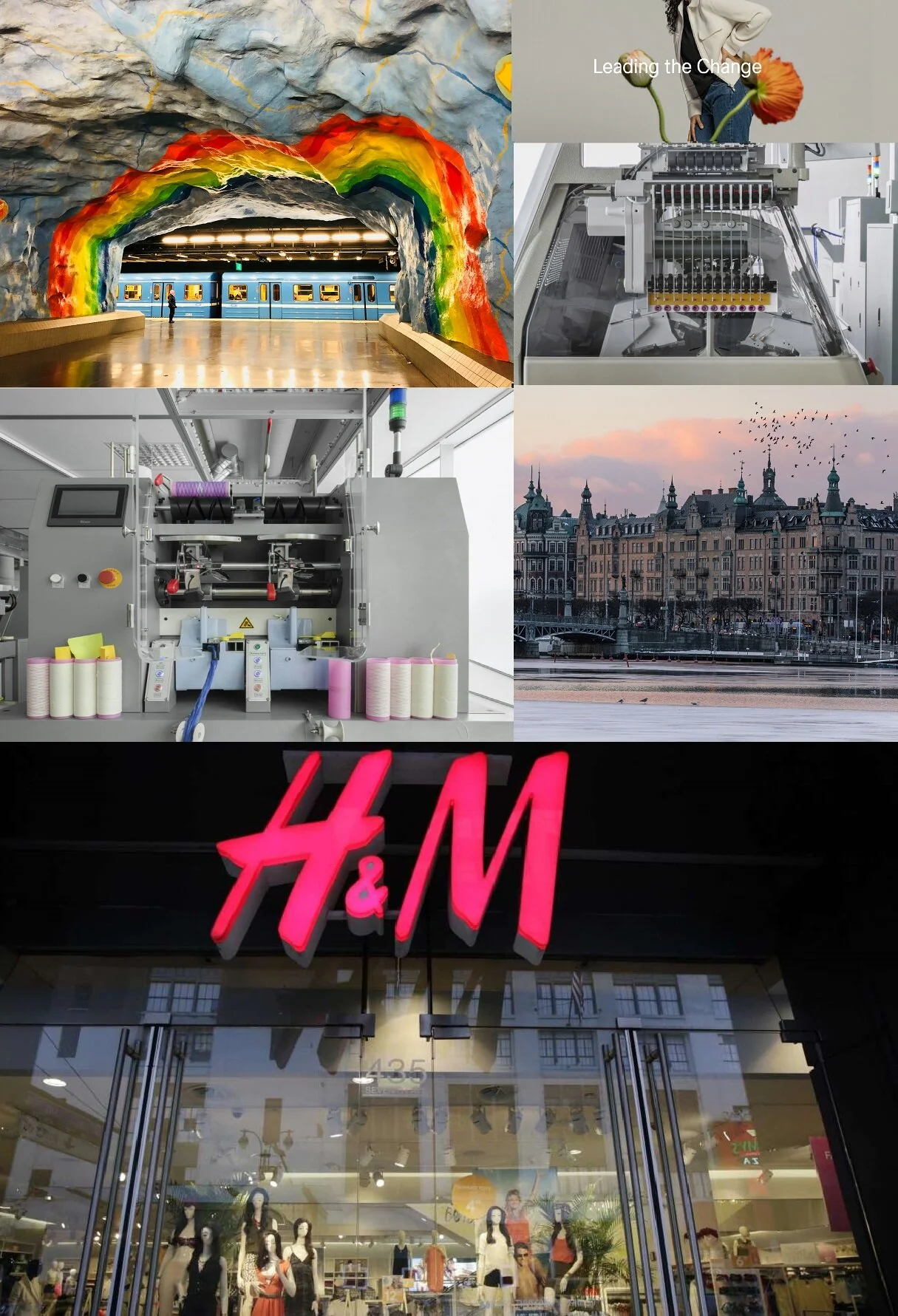H&M Opens LOOOP, World's First In-Store Recycling System to Educate Consumers
/Transformation has the greatest impact when it happens before our disbelieving eyes. H&M customers in Stockholm will soon see a new vision of garment-to-garment recycling happening live in-store with the introduction of ‘LOOOP’, a functional machine that also sends a clear message around fashion industry waste and carefree disposability. Old textiles hold a value and should never go to waste.
When LOOOP opens in the Drottininggatan shopping district on Oct. 12, customers are invited to bring a garment scheduled for the garbage heap into the store for transformation. In a process that takes about five hours, that raggedy T-shirt or too-small cotton dress will be broken down and then rewoven into a sweater, scarf — or perhaps a baby blanket — while the customer watches all or part of the process. Upon completion, the customer then pays about $15 for the new item.
Pascal Brun, H&M’s head of sustainability, explains that the point of a particular container-size LOOOP machine located in-store isn’t to scale out the recycling opportunity. LOOOP is an educational tool that invites — and hopefully compels — the fashion consumer to become part of the sustainability effort.
“We’ve built this machine as a miniaturized version of a real process to show customers how crucial they are to the process,” says Erik Bang, innovation lead at the H&M Foundation, which invests in sustainable technology for the entire fashion industry.
The LOOP Process
A run-through of the eight steps turning old garments into new:
1. Cleaning
First, your old garment is sprayed with ozone to remove any microorganisms.
2. Shredding
The garment is then shredded down into small chunks of fabric fibres.
3. Filtering
Shredded chunks are filtered to remove dirt, and extra virgin material is added for strength.
4. Carding
The clean fibre mix is straightened into a fibre web and then pulled into slivers.
5. Drawing
Multiple fibre slivers are combined to create even stronger, thicker slivers.
6. Spinning
The thick fibre slivers are spun to create a single yarn thread.
7. Twisting
Single yarn threads are doubled and twisted together to increase their strength.
8. Knitting
The yarn is then knitted into a new, ready-to-wear design.
The only thing added to the entire regerative process is some sustainably sourced material to strengthen the yarn. This has to be done since the mechanical shredding shortens the fibres of your old garment. No water, no dye are used in the process.
The Global Mess Fast Fashion Has Created
Presently, only 1% of our clothing and related materials are recycled into new clothing when we discard them. H&M is one of the worst offenders in the world of fast fashion, but they are also a leading innovator in taking responsibility for their earth-threatening, consume-at-all-costs philosophy. Bloomberg reported that in 2018 H&M had $4.3 billion worth of unsellable inventory, as profits plunged to the lowest level since 2005.
In 2015, the fashion industry churned out 100 billion articles of clothing, doubling production from 2000, far outpacing global population growth. In that same period, we’ve stopped treating our clothes as durable, long-term purchases. The Ellen MacArthur Foundation has found that clothing utilization, or how often we wear our clothes, has dropped by 36% over the past decade and a half, and many of us wear clothes only 7 to 10 times before it ends up in a landfill. Studies show that we only really wear 20% of our overflowing closets. via
Consume less is probably the best message for the planet, but it presents a gut punch to global business markets. Clearly, any flip-the-switch strategy can accelerate an already precarious global business market. H&M’s new LOOOP recycling and transforming machine that brings consumers into the process of creating a circular economy must be recognized as a positive advancement.
The Ellen MacArthur Foundation is a leader — with Stella McCartney — in advancing the concept of a new circular economy. These experts have challenged the fashion industry to reduce by 48% carbon dioxide emissions by 2030.
H&M Group is part of the Ellen MacArthur Foundation’s Make Fashion Circular initiative. LOOOP is part of that initiative, but we stress the reality that WE also must become part of the initiative and change our own philosophies as consumers.
Challenged by COVID, Fashion CANNOT Back Down
The technology behind Looop has been developed by The Hong Kong Research Institute of Textiles and Apparel (HKRITA) in collaboration with the non-profit H&M Foundation. As of now, Looop is the only in-store recycling machine, but HKRITA will license the technology widely to help the entire industry become more circular. This is important, because to create real change, all brands need access to technologies like Looop.

